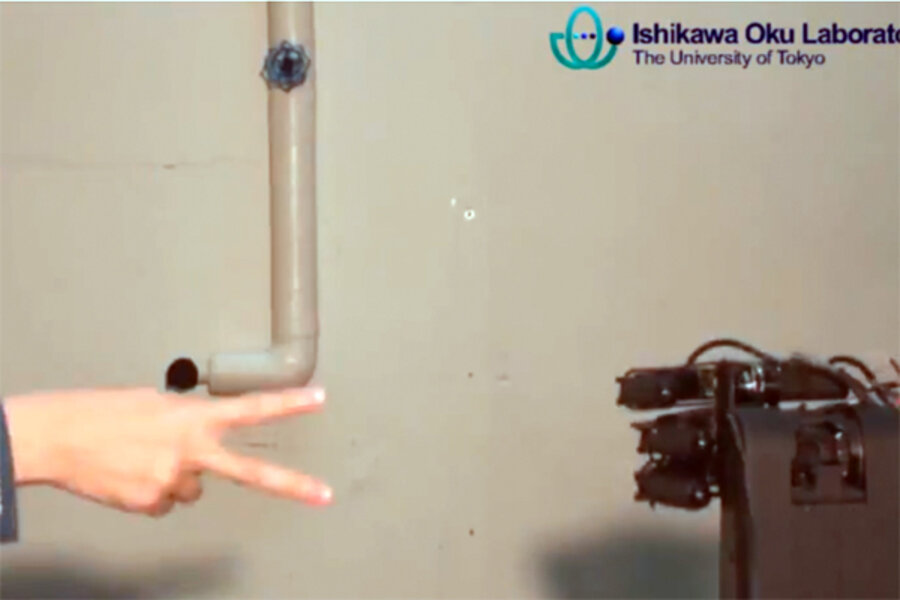Robot beats human at rock, paper, scissors. Every time.
Loading...
It didn't really come as a surprise when they started beating us at checkers. There are, after all, a finite number of possible configurations of pieces on the board (about 500 billion billion), each with an optimal move. Creating a computer program that could never lose at checkers really just came down to a matter of mathematics and processing power.
Even chess, with all its metaphors for foresight and circumspection, can ultimately be boiled down to computation. In 1997, when IBM's Deep Blue machine defeated grandmaster Gary Kasparov, many regarded it not as a question of if, but of when.
It was somewhat more unsettling when they started mastering trivia. But even when IBM's supercomputer, Watson, defeated Jeopardy! champion Ken Jennings last year, we meatbags could comfort ourselves by knowing that all the machine was really doing was plucking keywords and searching the encyclopedias stored in its four-terabyte hard disk.
But rock, paper, scissors?!
Apparently what most of us had assumed was an innocent game of chance, an equitable way of say, determining who gets to ride shotgun, is actually a computational problem that can be measured, analyzed, and, if your'e a robot with a high-speed camera and lightning-quick motors, mastered.
A robot at the University of Tokyo's Ishikawa Oku Lab has done just that. Dubbed the "human-machine cooperation system" – "cooperation" being a robotics term for "humiliation" – this mechanical hand is able to beat a human opponent at rock paper scissors. Every time.
Unlike other electronic rock, paper, scissors opponents, such as this epic time waster on the New York Times's website, that analyze patterns gathered from thousands of previous games, this one defeats humans simply by being really, really fast.
According to the press release from the Ishikawa Oku lab, it takes just one thousandth of a second for the robot can recognize the shape of the human hand just as the rock, paper, or scissors is being thrown. It takes only a few more thousandths of a second – far faster than a human can detect – for the robot to shape its fingers into a winning response.
When viewed in realtime, it appears as though the robot is reading the human's mind. It's only when you slow the video down to one 50th of the speed that you can see the delay in the machine's response, and even then the lag is just barely perceptible.
Time magazine suggests that the robots uncanny reflexes might be helpful in disasters or war zones, where timing is everything. Such life-saving advancements would be welcome. But watching this video, you cannot help wanting to see the human respond by dumping a cup of coffee on the robot.





